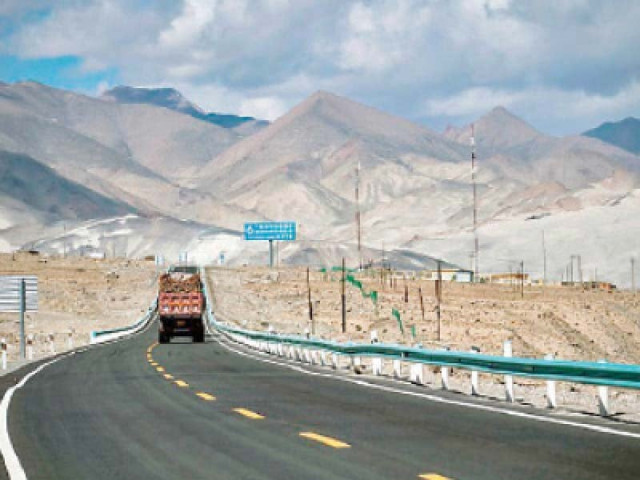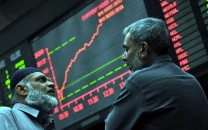Is Pakistan oblivious to competitors?
While world races towards growth, Islamabad’s politicians bicker inconsequentially

The China-Pakistan Economic Corridor (CPEC) is a dream project that many countries aspire to have. It possesses all the necessary components to propel any nation towards rapid economic growth, development, and diversification.
CPEC encompasses various areas of cooperation that hold importance for Pakistan. To benefit from CPEC, it is imperative to implement the right set of policies, take appropriate actions, and establish a robust institutional framework.
Additionally, it is important to consider that CPEC is part of the Belt and Road Initiative (BRI), which comprises 152 member countries. As a result, healthy competition exists among these members to benefit from Chinese investments and gain access to its market.
Against this backdrop, Pakistan should prioritise conducting a comprehensive situational analysis to identify potential competitors of CPEC, particularly within the region and adjacent regions. This analysis will help gain a better understanding of the prevailing conditions and formulate appropriate policies while establishing the necessary institutional framework.
Unfortunately, such an analysis is currently lacking. To bridge this gap, the Asian Institute of Eco-civilisation Research and Development has conducted a preliminary analysis and identified potential competitors of CPEC. Although the list of competitors is extensive, we have selected only a few based on their strong relevance to Pakistan.
First, the kingdom of Saudi Arabia (KSA) is emerging as a new competitor of Pakistan in attracting Chinese investment. President Xi’s visit to KSA has given a new impetus to these efforts.
Both countries have signed a comprehensive agreement to boost bilateral trade, economic, and investment linkages. KSA has successfully secured commitments from Chinese companies to invest in various fields, including green energy, green hydrogen, photovoltaic energy, information technology, cloud services, transportation, logistics, medical industries, housing, and construction factories.
Both nations have signed 34 agreements to support close cooperation. KSA believes that cooperation with China is of paramount importance in achieving the goals of Vision 2030. In order to foster cooperation and materialise the agreements, KSA has announced its intention to establish four special economic zones.
Secondly, the China-Central Asia-West Asia corridor is gaining momentum. This corridor will connect five Central Asian and 17 West Asian states, including Saudi Arabia, Iran, and Turkey.
Afghanistan will play a crucial role as a connecting node, linking the China-Central Asia-West Asia corridor with CPEC and West Asia. The China-Central Asia-West Asia corridor will also serve as an alternative route for China to connect with the Middle East, the Balkans, and the Caucasus states, with the potential for expansion into North Africa. Thirdly, China has signed the Comprehensive Regional Economic Partnership (RCEP) with Australia, Brunei, Cambodia, Indonesia, Japan, South Korea, Laos, Malaysia, Myanmar, New Zealand, the Philippines, Singapore, Thailand, and Vietnam.
Through RCEP, China has offered lucrative incentives to its partners in the fields of investment, technology, trade, and economic linkages.
Fourthly, India is a fierce competitor and opponent of Pakistan and CPEC. Although India is not part of BRI, it has established strong bilateral trade linkages with China. It was reported that bilateral trade between the two countries exceeded $125 billion last year.
Additionally, India is a member of BRICS, which is considered one of the most powerful economic groups. BRICS has already surpassed the G7 in terms of GDP and is working to challenge the hegemony of the US dollar.
Russia, South Africa, and Brazil are actively involved in efforts to establish a new currency, and India has joined these efforts.
India is also benefiting from the New Development Bank (NDB) of BRICS, which has already disbursed around $32.6 billion for over 100 projects, with India being one of the leading beneficiaries.
Fifthly, Iran is another country that has accelerated its efforts to strengthen its relationship with China. In pursuit of this objective, Iran has secured $8.5 billion for 26 projects from the Export-Import Bank of China.
Furthermore, Iran has obtained funding of $1.6 billion for the electrification of the Mashhad-Tehran railway line. Negotiations are also underway for the construction of the Tehran-Isfahan fast-track railway line. In addition, Iran is promoting the East-West Railway Corridor and the International North-South Transport Corridor. China and Iran have signed a 25-year agreement to boost their relationship and enhance economic linkages. Various sources have quoted the value of this agreement to be around $400 billion.
Sixthly, after the withdrawal of US and allied forces, Afghanistan has expressed a strong intent to join the BRI. Afghanistan is actively pursuing China to strengthen their economic linkages, and China is keen to welcome Afghanistan into the BRI and build strong connections.
For instance, Chinese companies have shown interest in investing approximately $10 billion in the lithium sector.
China’s position paper on Afghanistan has also advocated for the inclusion of Afghanistan in the BRI, aiming to transform the country from being landlocked to land-linked.
Seventhly, Turkey has launched the Middle Corridor, which connects China to Turkey through Central Asian states. Turkey presents it as a complementary or alternative route to the China-Central Asia-West Asia Corridor and CPEC.
Turkey views this corridor as crucial for addressing poverty and development issues in its eastern region.
Eighthly, the UAE is a consistent player in the region and is emerging as a significant trade and investment partner of China in the Middle East. The UAE holds particular relevance for the development of the Gwadar port.
These competitors present significant challenges for Pakistan. Firstly, convincing them to join CPEC and implementing a third-party inclusion policy will be difficult. Secondly, these countries will be vying for Chinese investment.
For instance, Chinese companies are expected to rush to invest in KSA due to its market size and geographical advantage, especially its proximity to Africa, which offers a lucrative market. This creates tough competition for Pakistan’s Africa-focused policies.
Unfortunately, Pakistan seems to be unaware of the intensifying competition. Instead, blame games and political credit-seeking prevail. Major political parties, such as PTI and PML-N, continue to blame each other without focusing on institutional reforms for better delivery.
The situation demands that Pakistan breaks free from the blame game and takes decisive action. First, the revival and strengthening of the CPEC Authority is necessary. Second, CPEC should be depoliticised, with all parties committing to refrain from using it for political gains.
Third, innovative approaches are needed to ensure the success of Special Economic Zones (SEZs), as traditional methods may fall short. Fourth, Pakistan must let go of the illusion of strategic location and adopt policies to accommodate new realities and players.
Pakistan should be mindful that all these competitors, except India, are close friends of Pakistan, with millions of Pakistanis working in these countries. Therefore, Pakistan needs to devise a policy that strengthens existing relationships and transforms competition into win-win cooperation.
The writer is a political economist and a visiting research fellow at Hebei University, China
Published in The Express Tribune, May 1st, 2023.
Like Business on Facebook, follow @TribuneBiz on Twitter to stay informed and join in the conversation.



















COMMENTS
Comments are moderated and generally will be posted if they are on-topic and not abusive.
For more information, please see our Comments FAQ